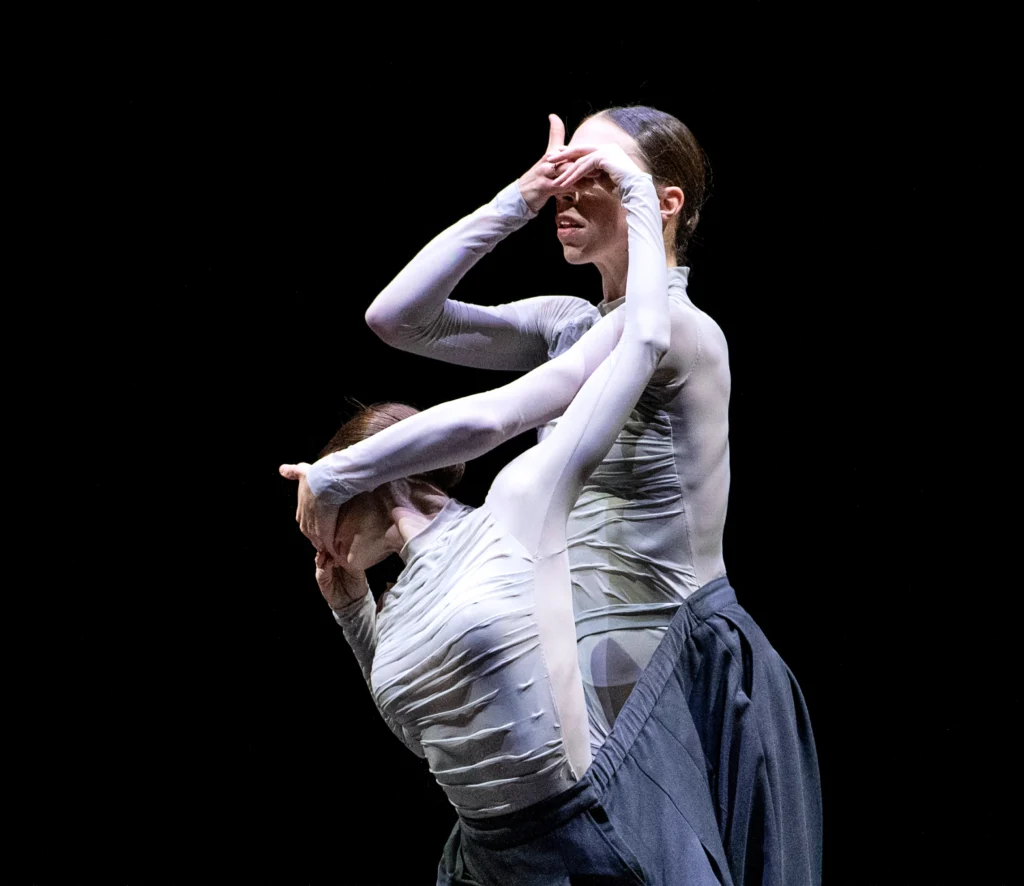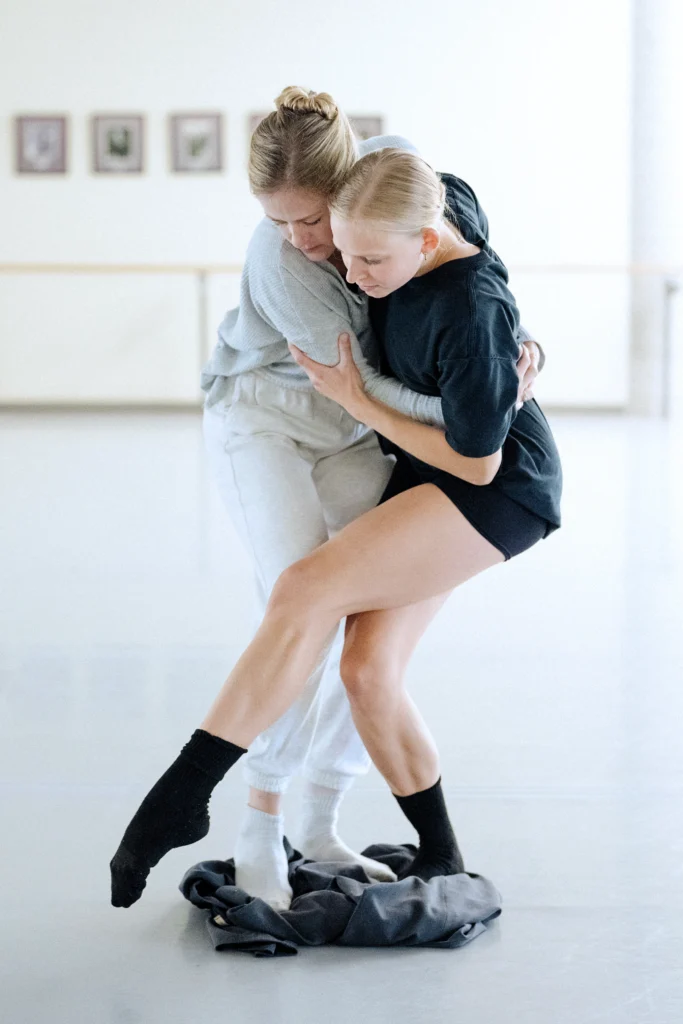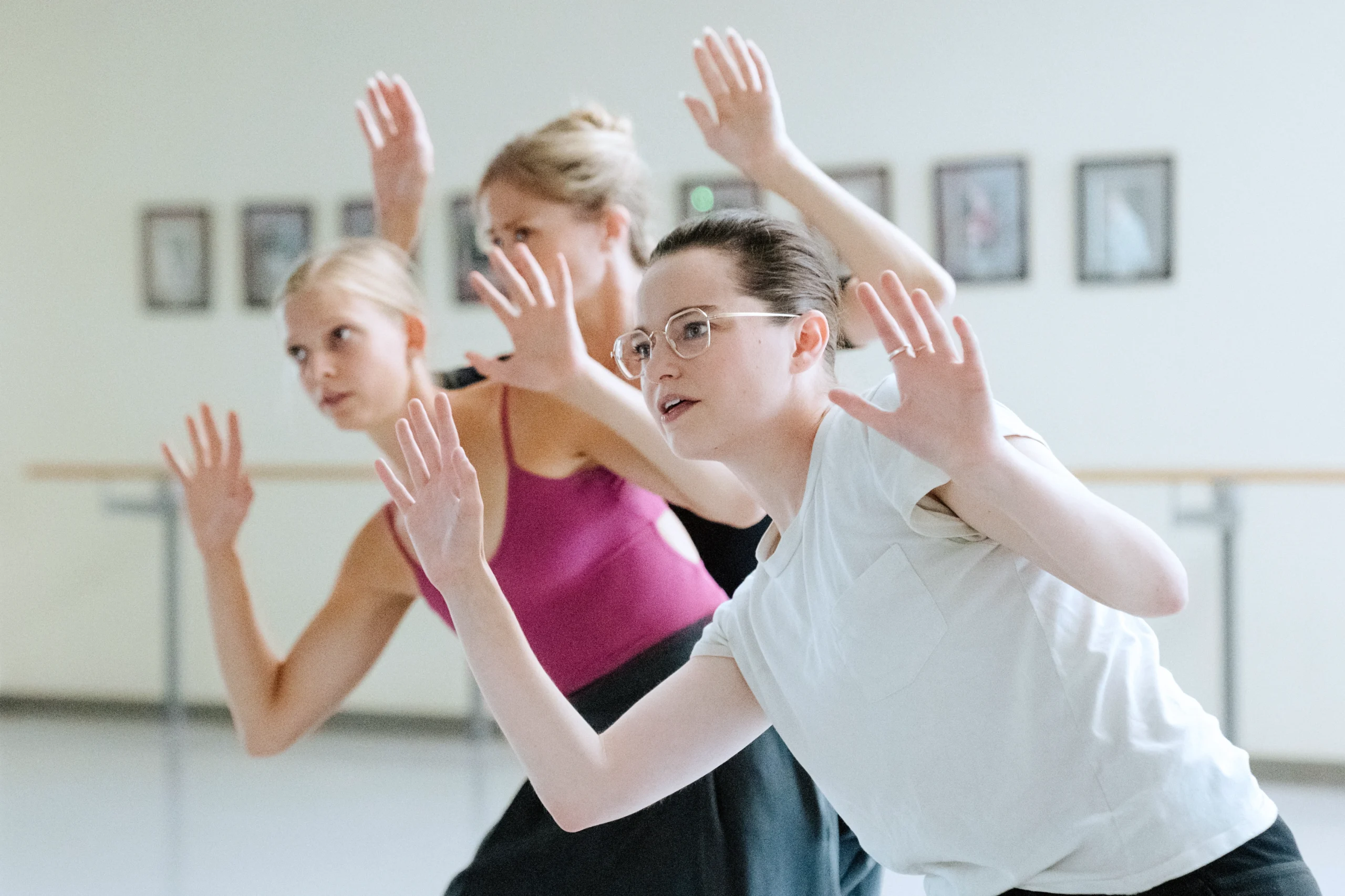Emma Portner Brings the Work That Kept Her in the Dance World to National Ballet of Canada
Emma Portner came pretty close to becoming a scientist. That was a few years ago, when the contemporary wunderkind needed a break from the dance world and enrolled in an environmental science program. Then, she got a call from Norwegian National Ballet artistic director Ingrid Lorentzen, asking if she wanted to make a ballet. Portner almost said no, but then decided the piece, eventually called islands, would be her “last hurrah.”
“Within a week of the premiere, every single ballet company that one would ever dream of working for was in my inbox asking for a new ballet for the same season,” she says. Portner decided to give herself another year in ballet, which eventually dragged into several. Now, she’s on track to have created five ballets for major companies before she turns 30 in November.
Last month, she premiered her Bathtub Ballet at the Royal Swedish Ballet, and in April, she’ll have yet another premiere, her Forever, maybe at GöteborgsOperans Danskompani. For now, though, islands—the piece that started it all—is back, this time at the National Ballet of Canada. It’ll be Portner’s first time sharing a major work in her home country, where she still escapes to spend time at her house and studio in the woods on her rare week off.
What’s new? It’s been a while.
My life has been crazy. I feel like the last time I connected with Dance Magazine I was a baby. It’s been forever since I’ve been interviewed because I’ve been in this prolonged period of discovery and change.
Are you based in Europe now?
I would consider Canada home, but I only get to spend really random bouts of time out here. I’m working in Scandinavia a lot. What was supposed to be a two-ballet contract with the Norwegian National Ballet ended up spanning four or five years because of the pandemic. I actually just finished dancing in a new ballet at the Oslo Opera House, a new piece by Alan Lucien Øyen. I was acting, which was a really fun departure for me.
I didn’t realize that islands changed your life in such a major way. Tell me about that piece.
Islands saved my life, in a way. When I went into it, I wasn’t in a great place. I was going through a lot in my personal life. I didn’t feel like a legitimate person to be making ballets. I felt like my personality was incompatible with the machine of the ballet institution. So when Ingrid called me, I declined at first. The only reason I ended up doing it was because I felt like I needed to escape the States. I needed to have a new start.

I wanted the piece to be two women. I wasn’t setting out to do a gay piece, I just felt that in the ballet space in 2018, queer representation was either by chance—like the lead got sick, so someone else had to come in and now it’s a queer duet for one night—or it’s this big, sweeping, romantic duet. I felt there was nuance and reality lacking. And I felt like, What if queerness isn’t the thing we’re putting onstage, it just exists? And we’re allowed to have a complex relationship, and have the queerness be secondary to that? Because that’s the truth to me.
In my earlier work, I would put way too many ideas into one thing. I couldn’t tolerate sitting with an idea long enough to see it develop. Now, I’m much more able to sit with things, and that’s what I really wanted to do with this one. The only idea I had going into it was that because of the classical tutu, women’s hips have been four feet apart for hundreds of years. I was like, What if we were able to reverse that? So for the first half of the piece, they are literally dancing inside the same pair of pants. That was the most fascinating and most frustrating and most awkward process. Some days in rehearsal, it was like, Okay, we need a break from the pants for five minutes.

What does it feel like to be sharing this piece in your home country and on such an iconic company?
When I was growing up, I had posters of Heather Ogden and Karen Kain in my bedroom. And then, Heather Ogden is cast in the piece. I really have to pinch myself. I actually went to the National Ballet summer programs growing up, and I was desperate to go to the school, but my mom didn’t let me. It’s this unattainable place that I never thought I would get to because I didn’t go through the front door. I’m entering through this magical backdoor.
You’ve said that you don’t consider yourself a ballet choreographer, but you’ve been working extensively in ballet. What does your relationship to ballet feel like right now?
This question is always swirling around in my head. I have to really leave myself in order to fit into the ballet institution because it’s so demanding of me on so many levels. I’m this question mark. People are taking a risk on me, and it’s a lot of pressure to walk into these spaces with so much history, and have it feel like it’s on my shoulders to change it. And people are looking at you and people are hoping with you and people are scared with you. But it feels like people are holding my pinky finger and not holding my hand through it. That’s where it gets really hard for me, because there’s still so much that needs to change. This is why I wanted to do five ballets before I’m 30: so I can say that I did it, and then I can step out of the ballet world for a second and reenter it in an entirely different way. I want to help ballet make itself more sustainable and to open the door for other people. Because I love ballet, and I want to see it thrive, but I want to see its people healthier. I want to see more people making ballets and trying new things and making a mess onstage and for that to be okay. I just feel like the whole system can use a little more breath and a little more optimism and a little more chance. But what is chance at the end of the world? You know, I’m someone who never wants to do interviews, but then I start doing an interview and I can’t stop talking. It’s fascinating.




